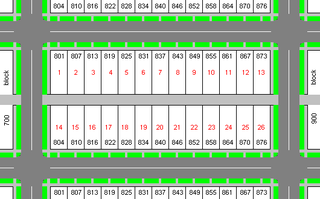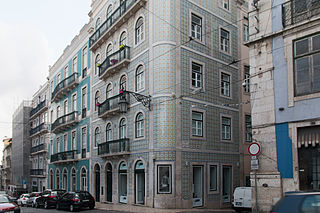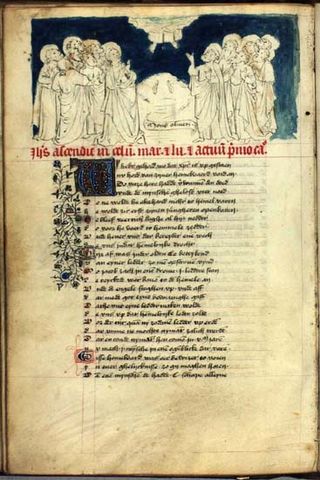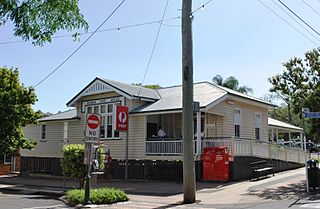Linguistic typology is a field of linguistics that studies and classifies languages according to their structural features to allow their comparison. Its aim is to describe and explain the structural diversity and the common properties of the world's languages. Its subdisciplines include, but are not limited to phonological typology, which deals with sound features; syntactic typology, which deals with word order and form; lexical typology, which deals with language vocabulary; and theoretical typology, which aims to explain the universal tendencies.
A pattern language is an organized and coherent set of patterns, each of which describes a problem and the core of a solution that can be used in many ways within a specific field of expertise. The term was coined by architect Christopher Alexander and popularized by his 1977 book A Pattern Language.
Typology is the study of various traits and types, or the systematic classification of the types of something according to their common characteristics. Typology is the act of finding, counting and classifying facts with the help of eyes, other senses and logic. Typology may refer to:

A terrace, terraced house (UK), or townhouse (US) is a kind of medium-density housing that first started in 16th century Europe with a row of joined houses sharing side walls. In the United States and Canada these are sometimes known as row houses or row homes.

A city block, residential block, urban block, or simply block is a central element of urban planning and urban design.

Léon Krier CVO is a Luxembourgish architect, architectural theorist, and urban planner, a prominent critic of modernist architecture and advocate of New Classical architecture and New Urbanism. Krier combines an international architecture and planning practice with writing and teaching. He is well known for his master plan for Poundbury, in Dorset, England. He is the younger brother of architect Rob Krier.

Bairro Alto is a central district of the city of Lisbon, the Portuguese capital. Unlike many of the civil parishes of Lisbon, this region can be commonly explained as a loose association of neighbourhoods, with no formal local political authority but social and historical significance to the urban community of Lisbon and of Portugal as a whole.

A single-family detached home, also called a single-detached dwelling,single-family residence (SFR) or separate house is a free-standing residential building. It is defined in opposition to a multi-family residential dwelling.

Urban morphology is the study of the formation of human settlements and the process of their formation and transformation. The study seeks to understand the spatial structure and character of a metropolitan area, city, town or village by examining the patterns of its component parts and the ownership or control and occupation. Typically, analysis of physical form focuses on street pattern, lot pattern and building pattern, sometimes referred to collectively as urban grain. Analysis of specific settlements is usually undertaken using cartographic sources and the process of development is deduced from comparison of historic maps.

Typology in Christian theology and biblical exegesis is a doctrine or theory concerning the relationship of the Old Testament to the New Testament. Events, persons or statements in the Old Testament are seen as types prefiguring or superseded by antitypes, events or aspects of Christ or his revelation described in the New Testament. For example, Jonah may be seen as the type of Christ in that he emerged from the fish's belly and thus appeared to rise from death.
In archaeology, a typology is the result of the classification of things according to their physical characteristics. The products of the classification, i.e. the classes, are also called types. Most archaeological typologies organize portable artifacts into types, but typologies of larger structures, including buildings, field monuments, fortifications or roads, are equally possible. A typology helps to manage a large mass of archaeological data. According to Doran and Hodson, "this superficially straightforward task has proved one of the most time consuming and contentious aspects of archaeological research".
SmartCode is a unified land development ordinance template for planning and urban design. Originally developed by Duany Plater-Zyberk & Company, this open source program is a model form-based unified land development ordinance designed to create walkable neighborhoods across the full spectrum of human settlement, from the most rural to the most urban, incorporating a transect of character and intensity within each. It folds zoning, subdivision regulations, urban design, and basic architectural standards into one compact document. Because the SmartCode enables community vision by coding specific outcomes that are desired in particular places, it is meant to be locally calibrated by professional planners, architects, and attorneys.

Nikos Angelos Salingaros is a mathematician and polymath known for his work on urban theory, architectural theory, complexity theory, and design philosophy. He has been a close collaborator of the architect Christopher Alexander, with whom Salingaros shares a harsh critical analysis of conventional modern architecture. Like Alexander, Salingaros has proposed an alternative theoretical approach to architecture and urbanism that is more adaptive to human needs and aspirations, and that combines rigorous scientific analysis with deep intuitive experience.

A Theory of Architecture is a book on architecture by Nikos Salingaros, published in 2006 by Umbau-Verlag, Solingen, Germany ISBN 3-937954-07-4. Cover recommendations are by Kenneth G. Masden II, Duncan G. Stroik, Michael Blowhard, and Dean A. Dykstra. Preface by Prince Charles, and Foreword by Kenneth G. Masden II. This book is a re-working of previously published articles used to teach a senior architecture studio class. Four of the twelve chapters were originally written in collaboration, and the co-authors include Michael Mehaffy, Terry Mikiten, Debora Tejada, and Hing-Sing Yu.

Português Suave was an architectural style promoted by the Portuguese Estado Novo regime, essentially during the 1940s and the early 1950s. Officially promoted by the Portuguese government at the time as Estilo Português, it became more popularly known as "Português Suave" after a brand of cigarettes of the same name. This architectural style is also known Estado Novo style, but this last denomination is not very correct, since during the Portuguese New State Regimen diverse architectural styles have been applied in public buildings.
Typology is the study and classification of object types. In urban planning and architecture, typology refers to the task of identifying and grouping buildings and urban spaces according to the similarity of their essential characteristics.
Atelier Bow-Wow is a Tokyo-based architecture firm, founded in 1992 by Yoshiharu Tsukamoto and Momoyo Kaijima. The firm is well known for its domestic and cultural architecture and its research exploring the urban conditions of micro, ad hoc architecture.

Morphology in architecture is the study of the evolution of form within the built environment. Often used in reference to a particular vernacular language of building, this concept describes changes in the formal syntax of buildings and cities as their relationship to people evolves and changes. Often morphology describes processes, such as in the evolution of a design concept from first conception to production, but can also be understood as the categorical study in the change of buildings and their use from a historical perspective. Similar to genres of music, morphology concertizes 'movements' and arrives at definitions of architectural 'styles' or typologies. Paradoxically morphology can also be understood to be the qualities of a built space which are style-less or irreducible in quality.

The residential architecture in Historic Cairo covers the area that was built during the Fatimid, Ayyubid, Mamluk, Ottoman, French occupation and even Mohamed Ali periods. Historic Cairo covers an area of around 523.66 ha on the eastern bank of the Nile river and is surrounded by the modern quarters of Greater Cairo. First report of activities of Urban Regeneration Project for Historic Cairo set a map to compare the world heritage property and buffer zone in different institutions such as (URHC) & Supreme Council of Antiquities (SCA).

Boonah Post Office is a heritage-listed post office at 1 Park Street, Boonah, Scenic Rim Region, Queensland, Australia. The building was designed by the Queensland Government Architect's Office. It was added to the Australian Commonwealth Heritage List on 8 November 2011.















